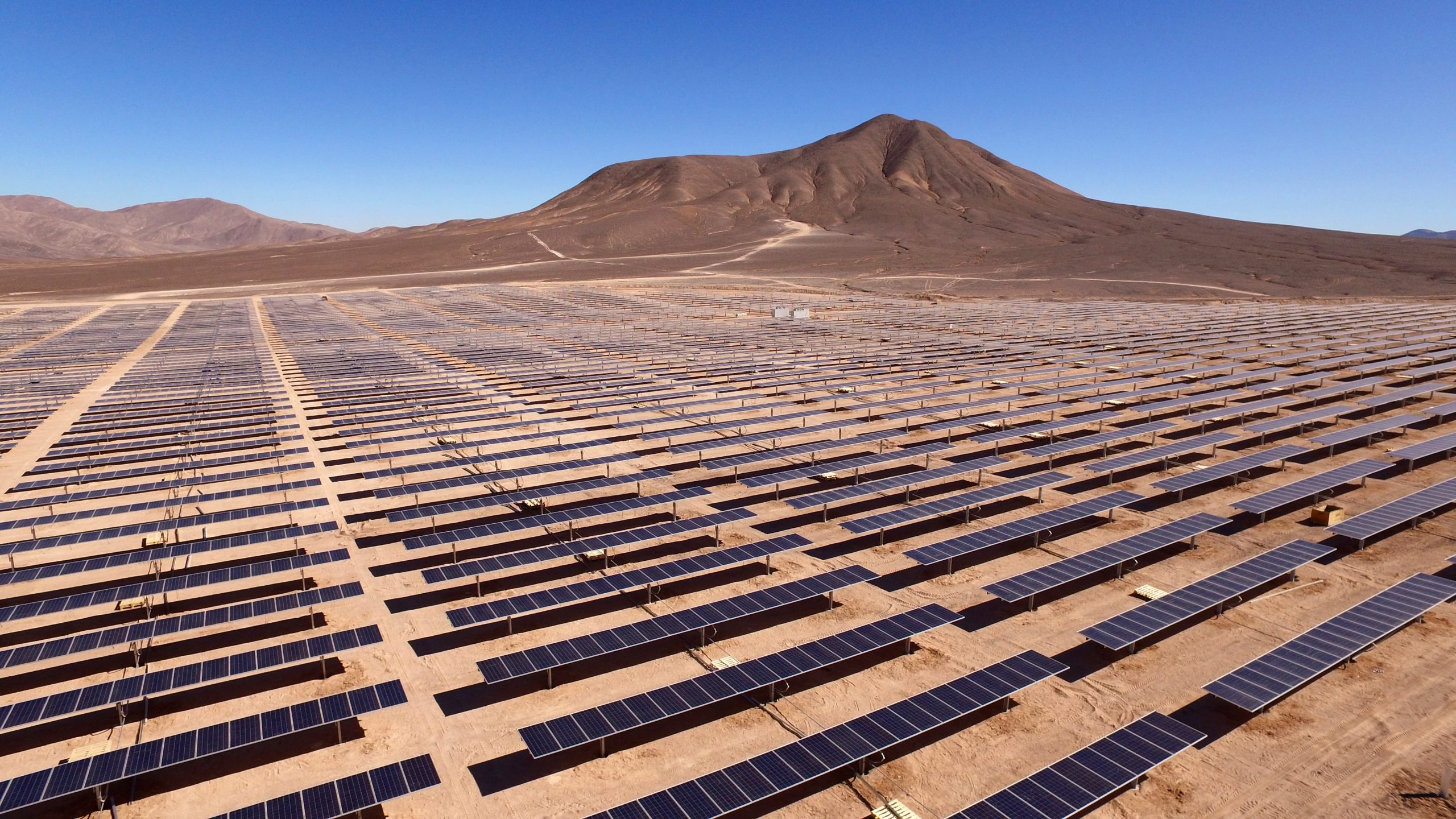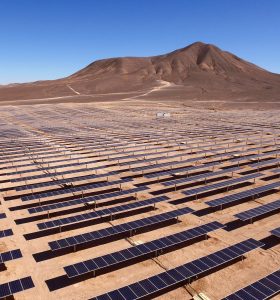What is renewable energy?
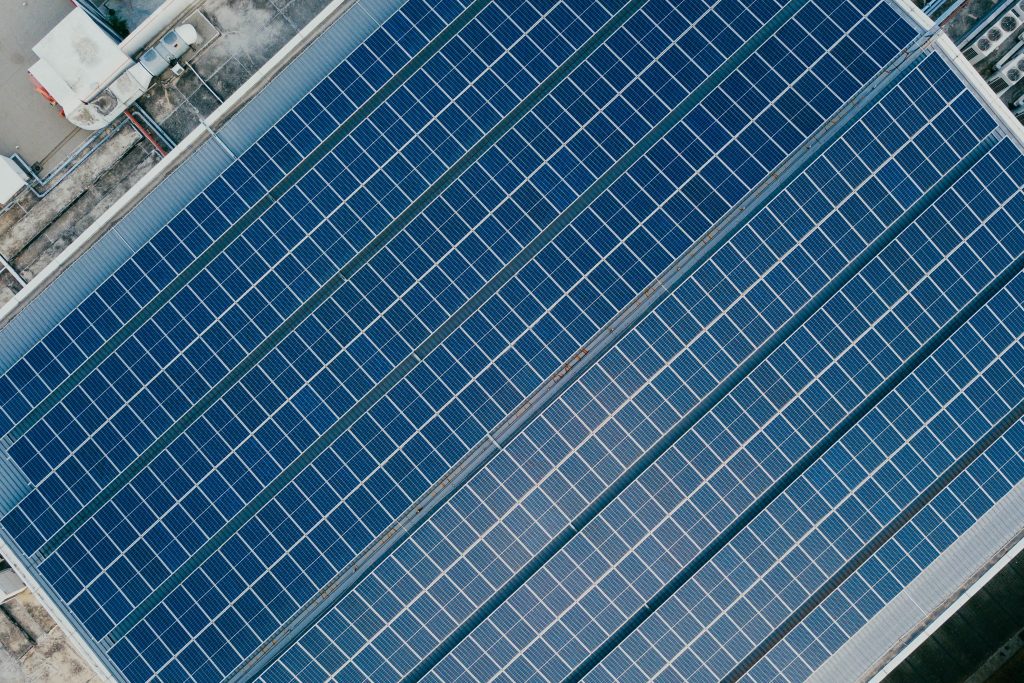
Renewable energy is created from a natural source that replenishes on a human time scale. Sources such as the sun, wind, tides, hydro, biofuels, and geothermal activity can be harnessed to generate electricity. Not only is renewable energy sustainable it also produces fewer greenhouse gases. In contrast, traditional fossil fuel energy sources do not replenish themselves within a human time scale and produce significant greenhouse gases when burnt to generate electricity. For example, coal, oil, and gas require millions of years to replenish, and when used for energy they release significant quantities of greenhouse gases such as carbon dioxide and methane.
Different types of renewable energy.
When harnessed the following resources create renewable energy:
Sun – Solar panels convert the sun’s radiation into electricity. In the case of concentrated thermal solar power stations, mirrors (heliostats) direct the sun at a single point which becomes extremely hot. This heat then generates steam to drive turbines.
Wind – Wind turbines convert wind energy into electricity. When sufficient wind is present the turbine’s blades rotate. The blades are connected to a shaft which in turn is connected to a generator.
Tidal – Utilises a similar concept to wind turbines, but instead uses the tidal movement to drive the blades or paddles.
Geothermal – Harnesses the earth’s natural expulsions of heat by turning water into steam which drives turbines. 27% of Iceland’s renewable energy comes from geothermal activity.
Hydroelectricity – Water escaping a dam drives turbines. Hydroelectricity generates 73% of Iceland’s electricity meaning renewable energy sources generate 100% of Iceland’s electricity.
Which renewable energy source a country uses depends on the resources available. For example, solar panels would not be suitable for winters in Iceland or Norway where only a few hours of sunlight are received. However, solar panels are ideal for countries like Spain or Australia which has stable amounts of sunlight year-round. Conversely, areas with little or no geothermal activity would not be conducive to a geothermal power station. As sunlight, wind, and rainfall cannot be regulated or predicted with 100% accuracy it is often necessary to harness several sources of energy. Geothermal is an exception as output does not vary dramatically seasonally or throughout the day.
Why is renewable energy important to Australia?
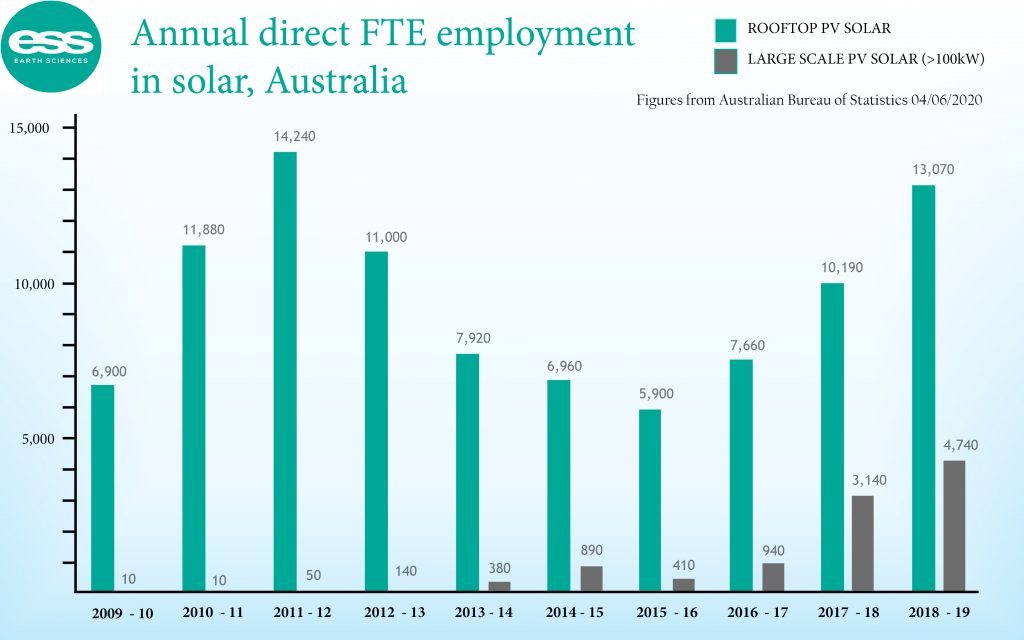
The topic can be addressed in terms of the renewable technology race, economic growth/stimulus, job creation, climate change, and energy security. We will address the two longer-term issues.
Anthropogenic climate change
Firstly, anthropogenic climate change/global warming. Australia has set out to “reduce greenhouse gas emissions to 26–28% below 2005 levels by 2030”. As part of the strategy to meet the target, renewable energy sources must produce at least 23% of Australia’s electricity. As of 2018, 19% of electricity generated in Australia was by renewable energy source, reliable data for 2019 and 2020 is difficult to discover. Even if the targets are met ahead of schedule, exceeding the targets will further reduce Australia’s greenhouse gas emissions.
Energy security
Secondly, Energy security. To quote Elon Musk “We know we’ll run out of dead dinosaurs to mine for fuel & have to use sustainable energy eventually, so why not go renewable now & avoid increasing risk of climate catastrophe”. While Musk’s statement is slightly inaccurate – Plankton is primarily responsible for oil and gas, not dinosaurs, he does have a point. For any country, energy security is critical and the demand for energy is only growing worldwide (though the Covid-19 Pandemic has dented demand). By transitioning to renewable energy sources sooner rather than later, Australia will reduce its reliance on imported energy sources and will secure future energy supply. This also has the added bonus of creating jobs and stimulating the economies of rural regions where large solar farms are often located.
Growth of renewables in Australia.
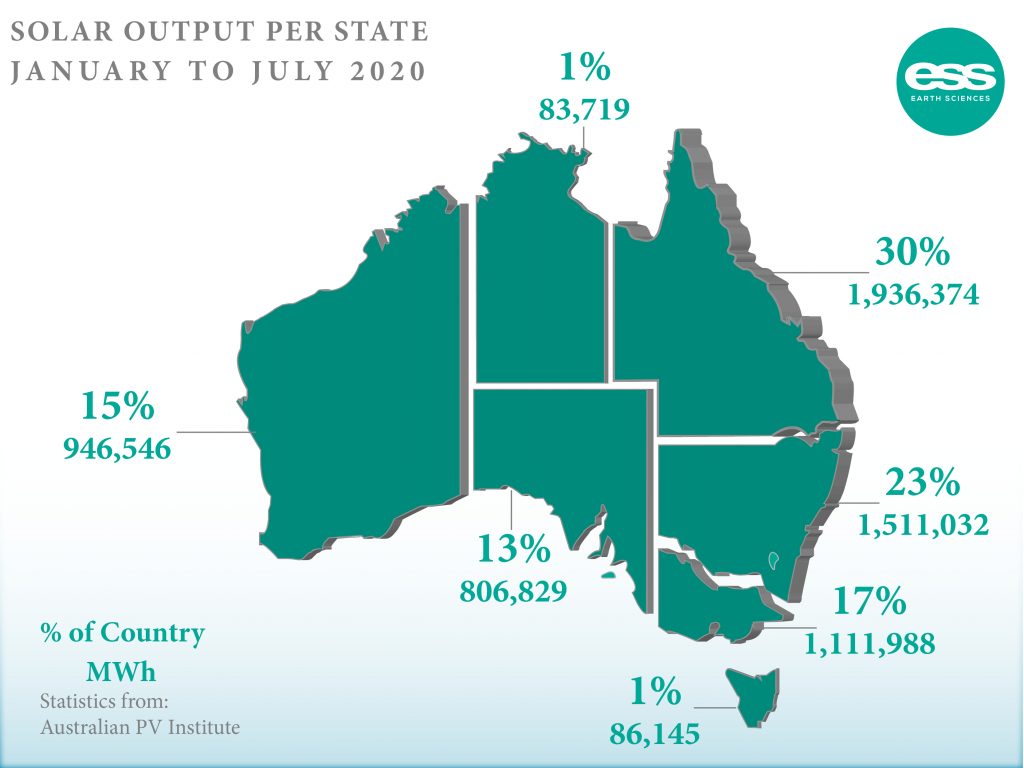
As the charts below indicate Australia is turning to renewable energy in a big way. Before 2015 there was no 100+ megawatt (MW) solar farms in Australia, since the first 100+ MW installation (Nyngan Solar Plant in NSW, 2015) there have been a further 24 registered, the largest being a 332 MW Darlington Point Solar Farm.
However, not all states are producing the same output. The figures in Chart 2 indicate that Queensland and New South Wales are leading the charge. However, it should be noted that even though South Australia is only producing 13% of the total output, it is holding it’s own when compared to its energy use and population, as nearly one 1 in 3 rooftops have a solar PV system installed.
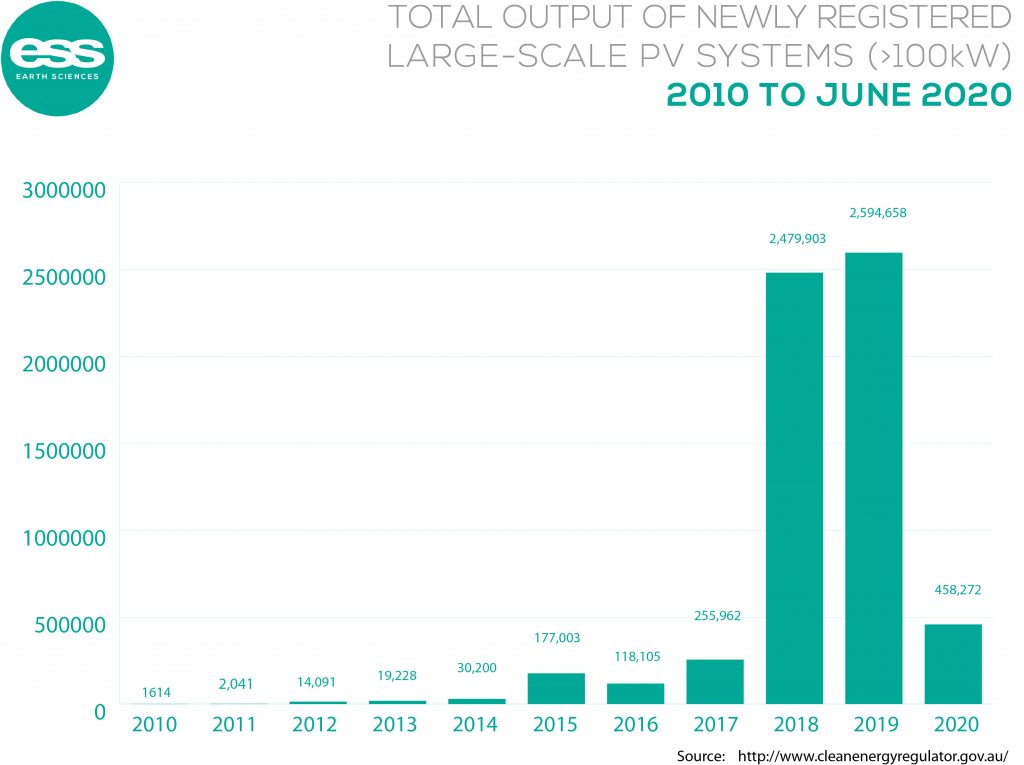
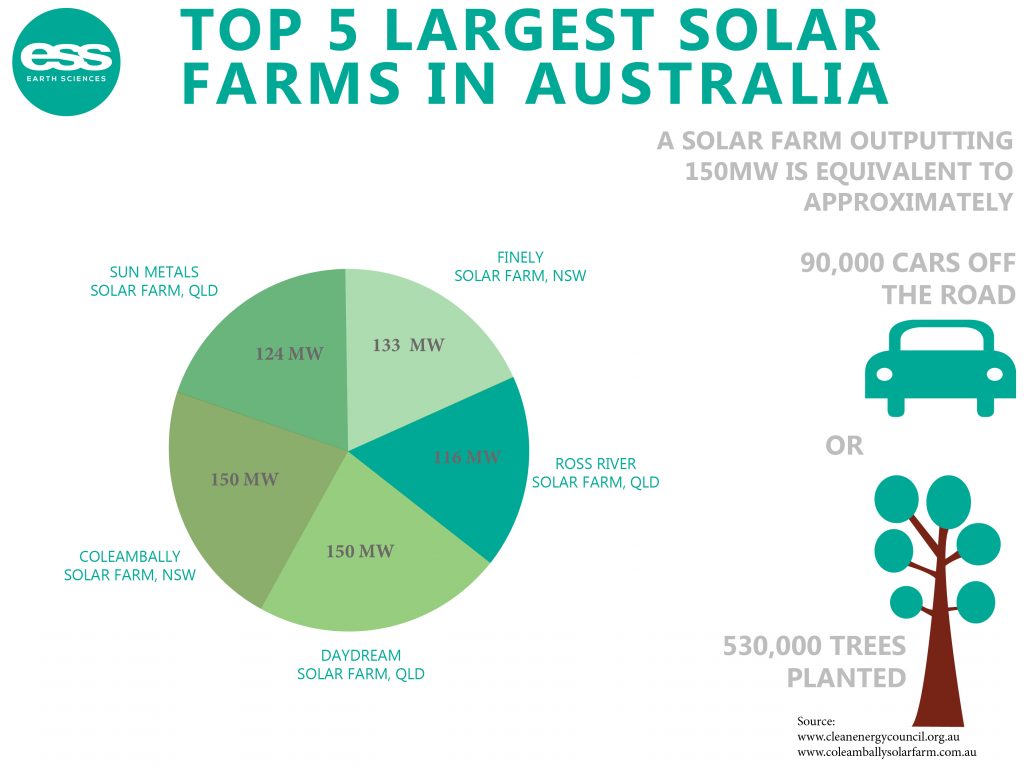
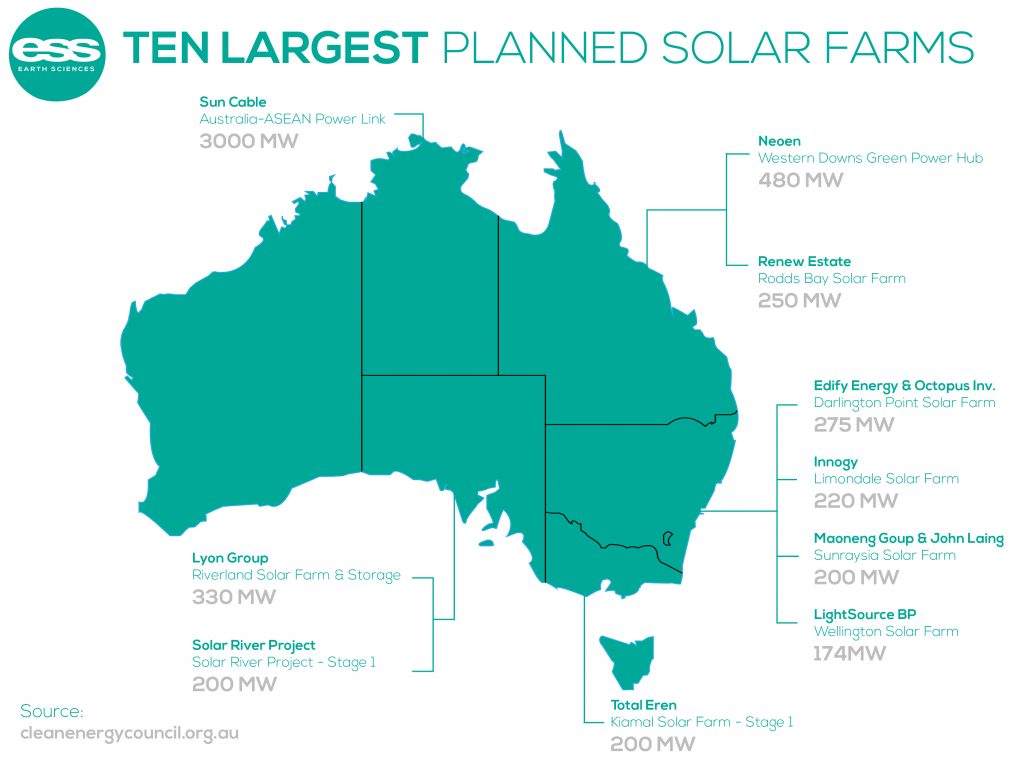
Preview in new tab(opens in a new tab)
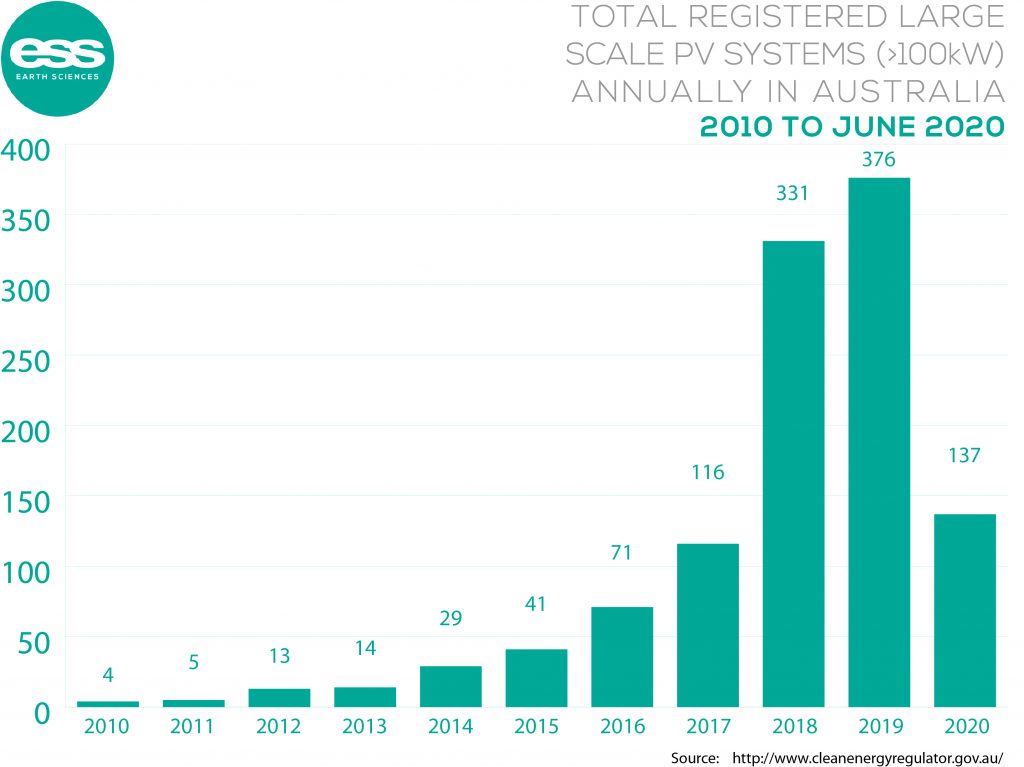
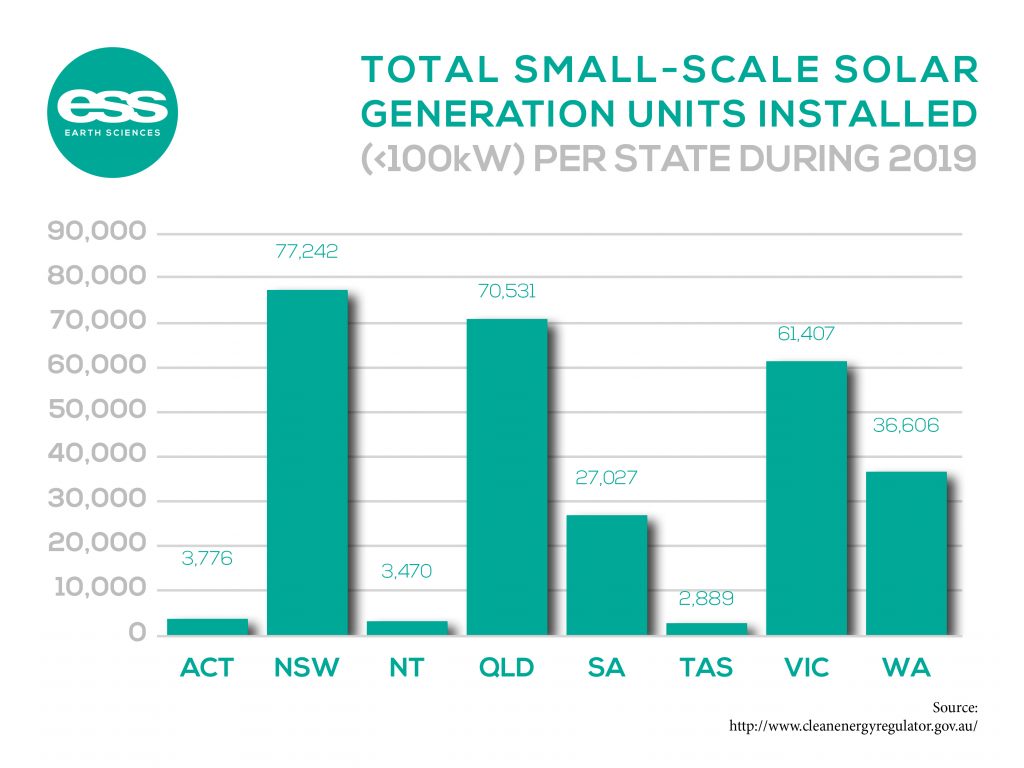
Sources for graphs and charts:

